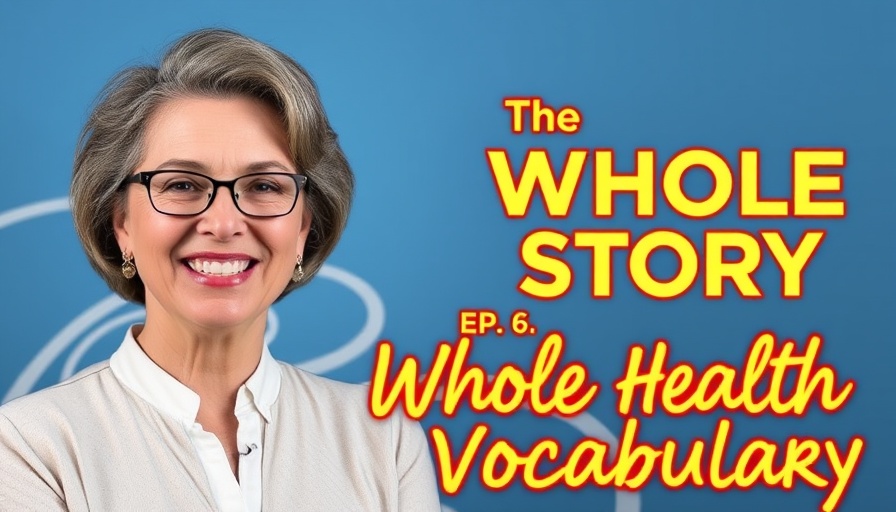
Understanding the Evolution of Health Terminology
When we dive into the realm of health care terminology, it’s fascinating to see how the words we use shape our understanding of wellness. In the video 'Whole Health Vocabulary,' Tracy Goddad takes us through a comprehensive journey of terms like alternative medicine, complementary health, and integrative medicine. It’s crucial to recognize that these terms do not merely describe different modalities of care; they reflect an evolution in our approach to health.
In 'Whole Health Vocabulary,' the discussion dives into the evolution of health terms, exploring key insights that sparked deeper analysis on our end.
From Alternative to Whole Health
Initially, alternative medicine stood at odds with conventional care, but as health care evolved, so did our understanding. The term 'alternative' suggested a division, almost as if we were choosing one camp over the other. However, with the rise of the term 'integrative medicine,' we started to embrace the idea that various healing approaches could coexist. Integrative medicine focuses not only on treating illness but enhancing overall well-being by combining the best of both worlds: conventional and complementary approaches.
The Importance of Whole Person Health
The National Institutes of Health (NIH) introduced the concept of whole person health—an approach emphasizing comprehensive care that recognizes the interconnectedness of body, mind, and spirit. This comprehensive view encourages practitioners and patients alike to look beyond mere physical symptoms and explore the mental and emotional aspects of health. It reminds us that our health is a tapestry woven from many threads—each vital in creating our overall wellness.
Empowerment Through Whole Health
As Tracy defines it in the video, 'whole health' is living a full and meaningful life. This continues to broaden our view of health to encompass mental, physical, emotional, and spiritual well-being. Empowerment plays a central role here, as individuals learn to take charge of their health journey. Whether you’re a naturopathic doctor looking to incorporate these perspectives with your patients, or a sports enthusiast seeking a balanced lifestyle, understanding whole health can inspire you to make more informed decisions.
Why This Matters for Families
Families, in particular, benefit from a holistic perspective. By addressing the diverse aspects of health together and promoting a culture of openness, love, and support, families can thrive. This shared understanding can help families navigate health challenges while encouraging resilience and adaptability. From managing stress to food choices, embracing whole health perspectives can bring families closer together, cultivating a supportive environment for better health outcomes.
Tips for Embracing Whole Health
So how can you start embracing whole health in your life? Here are some practical tips:
- Stay Informed: Read up on various health modalities and practices that resonate with you.
- Practice Mindfulness: Incorporate mental health practices like meditation or yoga into your routine.
- Connect with Nature: Spend time outdoors. Whether it’s walking, gardening, or simply enjoying the fresh air, being in nature can significantly enhance your well-being.
- Engage in Community: Surround yourself with individuals who support and uplift you—join groups or find activities that encourage health and connection.
Taking Action for Your Health Journey
The conversation around health continually evolves, reflecting the changing landscape of medicine and our understanding of well-being. By embracing the insights shared in 'Whole Health Vocabulary,' we not only expand our vocabulary but also enrich our lives with knowledge that promotes a holistic approach to health. It’s about being empowered to explore all aspects of health and well-being and nurturing a supportive environment for ourselves and our families.
If you’re ready to take charge of your health journey, explore options that resonate with your lifestyle choices, and consider how you can integrate new practices into your daily life. Remember, your health is your wealth—embracing whole health can lead to a more fulfilling and balanced life.
 Add Row
Add Row  Add
Add 




Write A Comment